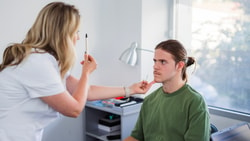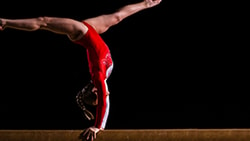Concussion: What Acute Sign Is Most Important?
Recognizing dizziness as a key predictor of concussion recovery can transform how clinicians assess and treat patients. Learn why vestibular and oculomotor exams are essential for effective concussion management.
December 15, 2015
2 min. read

It may surprise many clinicians to learn that the presence of DIZZINESS at the time of injury appears to be more important in predicting a slower recovery than other factors such as loss of consciousness, vomiting, seizures, or headache.1
Why is dizziness such an important predictor?
Dizziness is often a symptom attributed to vestibular system dysfunction. Clinicians should have an understanding of the vestibulo-ocular system to properly evaluate and manage children and adults after concussion. Patients with vestibular impairment are often more symptomatic and require additional consideration when prescribing exercises or other activities involving movement.
Role of oculomotor examination
While most physical therapists are comfortable performing an upper or lower quarter exam or assessing for orthopedic injuries, many are not familiar with the key elements of assessing vestibular function. Even fewer therapists are comfortable performing an oculomotor examination.
Recent evidence suggests that, in addition to vestibular evaluation, visual examination is also an important component of comprehensive assessment following a concussion.2-5 At a minimum, patients with concussion should be examined visually for:
Convergence and accommodative deficits.
Vestibular issues such as benign paroxysmal positional vertigo (BPPV), balance impairment, VOR deficits, and problems with visual-vestibular interaction.6
Vestibular and oculomotor problems following concussion may prolong recovery time. Yet, once identified, these deficits often respond to treatment. The ability to identify and effectively treat vestibular and visual problems is key to effective concussion management.
Below, watch Anne Mucha discuss convergence deficits occurring after concussion and how to evaluate them in a short video from the course, Concussion: Vestibular Abnormalities and Ocular Motor Examination.







